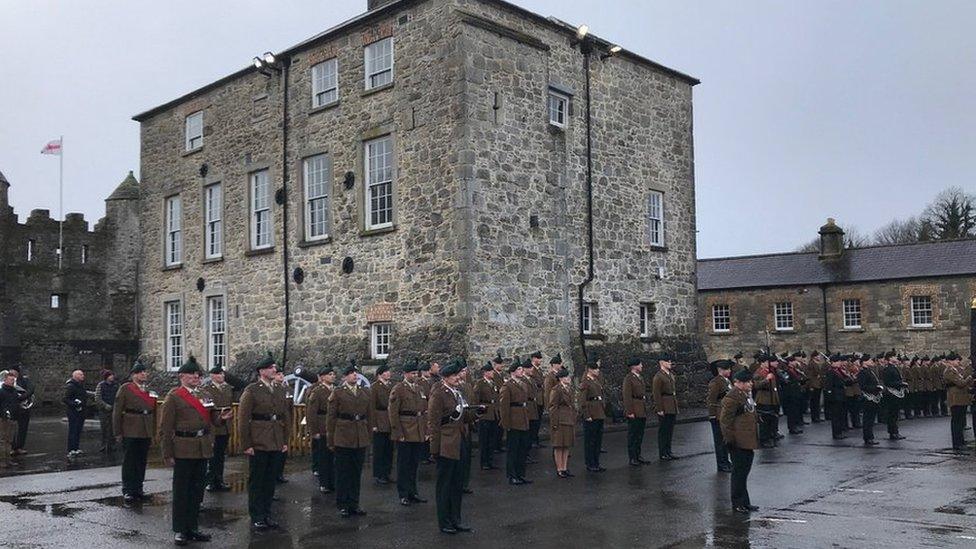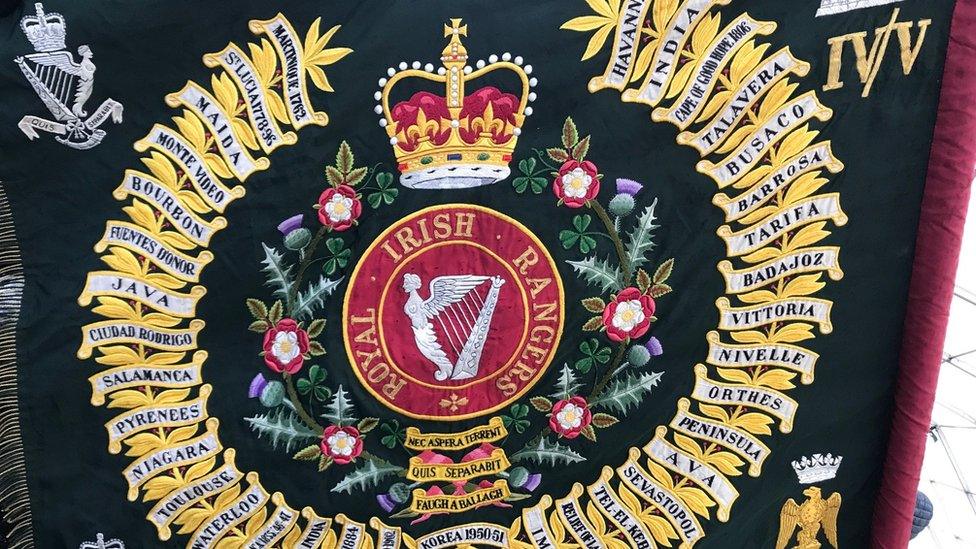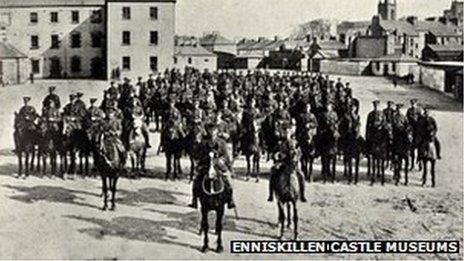Royal Irish Regiment flags laid up at Enniskillen Castle
- Published

The ceremony was held at Enniskillen Castle on Sunday
The regimental flags of the 2nd Battalion The Royal Irish Regiment have been presented to the Inniskillings Museum in Enniskillen.
Known as the Colours, they are a symbol of the regiment's history and are granted by the Queen.
A ceremony to lay up the Colours took place at Enniskillen Castle, in County Fermanagh, on Sunday.
The regiment was raised in the town in 1689 and became the Royal Inniskilling Fusiliers.
Enniskillen is the only town to have given its name to two British Army regiments.
The Royal Inniskilling Dragoon Guards were formed at the same time.
The Dragoon's Colours were laid up at St Macartin's Cathedral in 2013.

The flags record battle honours including Waterloo, Sevastapol, and the Korean War.
The tradition of the Colours dates back to ancient times when armies carried an identifying emblem into battle.
They are consecrated before being taken into use and after service are laid up in sacred or public buildings.
'Very spirit of the regiment'
The modern Colour carries the image of the Enniskillen Castle and the motto of the Royal Irish Regiment, Faugh a Ballagh or "Clear the way".
It also records battle honours including Waterloo, Sevastapol, and the Korean War.
The regiment received new Colours at a ceremony at the Titanic slipway in 2018.
Royal Irish regimental secretary Lt-Col Andy Hart said Colours were the "very spirit of the regiment".
"They represent the bond between the regiment and the sovereign but they're also consecrated and they have upon themselves a spiritual embodiment of the regiment as well," he added.
The Colours will be put on public display at the Inniskillings Museum at Enniskillen Castle.
Related topics
- Published21 October 2013
